Few If Any Hazards
The Finger Lakes region should get a respite from hazardous weather this week, though there will still be a few chances for rain.
There will be a couple of key differences in the weather this week compared to last week. First, the atmosphere as a whole will have much less moisture to work with. This will cut down on the intensity of any rain that falls.
Second, the weather systems that impact our region this week will be quick-moving. There will be no stalled-out fronts or slow-moving low pressure systems.
Lastly, the atmosphere will not have much instability, which is key for thunderstorm growth. When there is instability, there will be nothing to trigger storms.
So, while there will be chances for more rain, heavy rain and flooding should not be an issue, and severe thunderstorms are unlikely.
With all that in mind, there will still be several chances for rain this week.
The first chance will come today, though most areas will probably stay dry. A few stray showers will pop up from time to time, but especially during the afternoon hours. These showers will be small, individual cells that should not linger in any one place for more than 15-30 minutes.
Outside of these showers, today will be a mix of sun and clouds. The sunshine, however, will be hazy due to wildfire smoke high in the atmosphere. The showers and clouds will dissipate this evening, leaving mostly clear skies with areas of fog developing.
Temperatures will top out in the upper 70s to near 80 degrees. It will be a on the muggy side, with dewpoints in the mid and upper 60s. Overnight temperatures will drop into the low and mid 60s.

Passing Weather Systems
The daytime hours on Tuesday will be quiet. Skies will again be a mix of sun, clouds, and wildfire smoke. West and southwest winds will give temperatures a boost, with highs in the mid 80s. Dewpoints will remain in the mid and upper 60s.
Thunderstorms will drop southeast across Lake Ontario late in the day. By the time they arrive in the Finger Lakes, the sun will have set and the storms will be losing their intensity. Still, scattered showers and a few thunderstorms will be possible through the evening and overnight hours.
Clouds and a few showers will linger into Wednesday morning, but by midday, skies should be brightening. The afternoon will be a mix of sun and clouds. A breezy northwest wind will develop, holding temperatures to the low and mid 70s and reducing dewpoints to the mid 50s.
Morning fog on Thursday will give way to another partly cloudy day. Winds will be lighter as high pressure moves through. Temperatures will gain back a couple degrees, with highs in the mid and upper 70s.
Like Tuesday, a round of nighttime showers and storms will be possible Thursday night. And like Wednesday, Friday will start off with some clouds and showers before skies turn sunny for the afternoon.
Temperatures will take another hit behind this system. Highs on Friday may struggle to get much beyond 70 degrees. High temperatures will rebound some for Saturday, with mid 70s beneath mixed skies.
Another fast-moving system will be possible late in the weekend, though the details are highly uncertain this far in advance.
Next week looks like a continuation of this pattern with a couple of quick-moving weaker systems and temperatures generally sticking to the 70s or low 80s.
More Information:
» Finger Lakes Weather Radar
» Zip Code Forecasts
Want to support Finger Lakes Weather and keep the no-hype, local information flowing? As time goes on, monthly donations are lost as credit cards expire and the donations are not updated. Much of the progress with funding FLX Weather gained late last year has been lost. Please consider a monthly donation using the form below, or place an ad for your business on Finger Lakes Weather. Thank you for your continued support of Local Weather!

This graphic represents an average over the entire Finger Lakes region. Localized variations should be expected. Monthly Donations Getting Lost


john
Drew:
Thanks for the explanation. Lots of science. As I said, it’s fascinating.
John B.
Jim Sullivan
So one thing I’ve always wondered is why storms seem to dissipate once they get near our area, Lamoka lake area. A person once told me that because of the topography of our area it has a tendency to breakup storms. Any truth to that
Thx.
Jim
Meteorologist Drew Montreuil
Hi Jim. There definitely seem to be areas where this tends to happen. I experience it all the time where I live, too. I too suspect topography has a role to play. I really want to do an organized study on this but haven’t thought of a great way to systematically and scientifically test the theory yet.
john
Drew:
I find weather fascinating and I try to learn as much as possible about it. You are a great resource for this. Your explanations are clear and concise and simple enough for the non-science people like me to understand.
In your blog this morning, you stated “Lastly, the atmosphere will not have much instability, which is key for thunderstorm growth. When there is instability, there will be nothing to trigger storms.” You say that the atmosphere will not have instability this week. You also say that instability is key for storm development. But then you say that when instability is present, there is nothing to trigger storm growth. Could you please clarify?
Thanks so much.
John B. in Syracuse
Meteorologist Drew Montreuil
Hi John! Thanks for the compliments and questions! Let me try to clear things up a bit for you:
First, a bit more on instability. Instability is what allows air to rise rapidly, which gives growth to the clouds that produce thunderstorms. Without this instability, clouds will not grow large enough for thunderstorms. Instability at its simplest is a product of heat and humidity at the surface and cooler temperatures aloft. However, you also need something to get the air rising in the first place…some sort of front or atmospheric disturbance to give that initial nudge upward.
Most of the days this week will have little instability. The key-word in the first sentence you quoted is “much”. The days with the most instability will be today and tomorrow. For today, there will be just enough going on in the atmosphere to trigger a few isolated showers and storms. Tomorrow afternoon, there will not be anything to trigger storms, so the instability will be “wasted”, so to speak.
On the flip side, we have substantial triggers coming through in the form of fronts Tuesday and Thursday night. Since these are coming through at night, we won’t have daytime heating to help create instability. There will still be some minor instability, but nothing like the high amounts we have had the last couple of weeks that have helped produce severe weather and torrential, flooding downpours.
Let me know if you have any further questions!